
Gifting has never been easier
Perfect if you're short on time or are unable to deliver your gift yourself. Enter your message and select when to send it.


Only 1 left!
Miyabi 5000MCD Birchwood Santoku Utility Paring Knife 3 Pc Set$1,017.52 $1,799.95





Only 1 left!
Shun Kai Seki Magoroku Benifuji Paring Knife 12cm$78.95 $104.95
(to peel/cut fruit and veg, or precision work)






Only 18 left!
Victorinox Swiss Classic Straight Blade Paring Knife Black 6cm$7.89 $10.95
(to peel/cut fruit and veg, or precision work)




Only 1 left!
Tojiro Pro Flash Santoku Paring Knife 2 Pc Gift Set C$375.78 $509.95

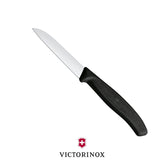

Only 60 left!
Victorinox Swiss Classic Straight Blade Paring Knife Black 8cm$8.69 $11.95


Only 10 left!
Victorinox Swiss Classic Straight Blade Paring Knife 6cm Red$8.09 $10.95
(to peel/cut fruit and veg, or precision work)


Only 2 left!
Ryda Knives ST650 Powder Steel Paring Knife 9cm$129.95 $129.95
(to peel/cut fruit and veg, or precision work)



Only 1 left!
Tojiro Pro Flash Chef Utility Paring Knife 3 Pc Gift Set B$570.22 $789.95



Only 1 left!
Tojiro Pro Flash Paring Knife 10cm$118.93 $164.95
(to peel/cut fruit and veg, or precision work)



Only 1 left!
Tojiro DP3 Series Paring Knife 9cm$87.47 $124.95
(to peel/cut fruit and veg, or precision work)
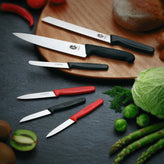

Only 4 left!
Victorinox Swiss Classic Paring Knife 3 Pc Set A$44.97 $64.95
(to peel/cut fruit and veg, or precision work)


Only 2 left!
Tojiro Hammered Paring Knife 13cm$110.99 $154.95
(to peel/cut fruit and veg, or precision work)



Only 1 left!
Tojiro Pro Flash Paring Knife 13cm$126.34 $174.95
(to peel/cut fruit and veg, or precision work)

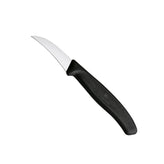

Only 19 left!
Victorinox Swiss Classic Shaping Knife 6cm$8.53 $11.95
(to peel/cut fruit and veg, or precision work)


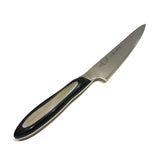
Only 1 left!
Tojiro Pro Flash Paring Knife 9cm$118.63 $164.95
(to peel/cut fruit and veg, or precision work)




Only 1 left!
Wusthof Classic Series Paring Knife 9cm$127.25 $179.00
(to peel/cut fruit and veg, or precision work)



Only 1 left!
Miyabi 5000FCD Paring Knife 9cm$211.50 $399.95
(to peel/cut fruit and veg, or precision work)


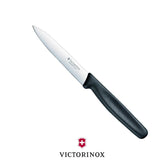

Only 2 left!
Victorinox Swiss Classic Straight Blade Paring Knife Black 10cm$10.41 $15.95


Only 2 left!
Tojiro DP3 Series Paring Knife 12cm$91.46 $129.95
(to peel/cut fruit and veg, or precision work)
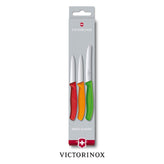

Only 4 left!
Victorinox Swiss Classic 3 Colours Paring Knife 3 Pc Set$29.95 $42.95
(to peel/cut fruit and veg, or precision work)


Only 2 left!
Shun Kai Classic White Paring Knife 8.9cm$137.90 $194.95
(to peel/cut fruit and veg, or precision work)




Only 2 left!
Tojiro DP3 Series Paring Knife 15cm$95.95 $144.95
(to peel/cut fruit and veg, or precision work)


Only 2 left!
Tojiro Hammered Paring Knife 9cm$94.93 $139.95
(to peel/cut fruit and veg, or precision work)

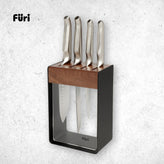

Only 1 left!
Furi Pro Limited Edition Walnut & Black Knife Block 5 Pc Set$204.89 $449.00



Only 3 left!
ZWILLING Twin Fin II Petty Knife 13cm$119.53 $199.95
(to peel/cut fruit and veg, or precision work)




Only 1 left!
Victorinox Swiss Modern Table Set (Rounded Knife) 24 Pc Blue$287.59 $545.00



Only 2 left!
Miyabi 5000FCD Paring Knife 13cm$226.67 $409.95
(to peel/cut fruit and veg, or precision work)



Only 3 left!
ZWILLING Four Star Paring Knife 10cm$90.61 $169.95
(to peel/cut fruit and veg, or precision work)




Only 2 left!
Victorinox Swiss Classic Cutlery Block 11 Pc Set$497.50 $875.00
(multi -purpose 11 pc set)



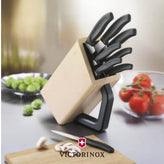
Only 3 left!
Victorinox Swiss Classic Cutlery Block 8 Pc Set$459.13 $725.00
(multi-purpose knife set)

Paring knives are a small knife with a plain edge blade, perfect for peeling fruits and vegetables or for small delicate work i.e. slicing a single garlic clove, de-veining a shrimp, cutting shapes into dough and so forth.
They are very versatile knives and one of the most used knives in a chef’s kitchen.